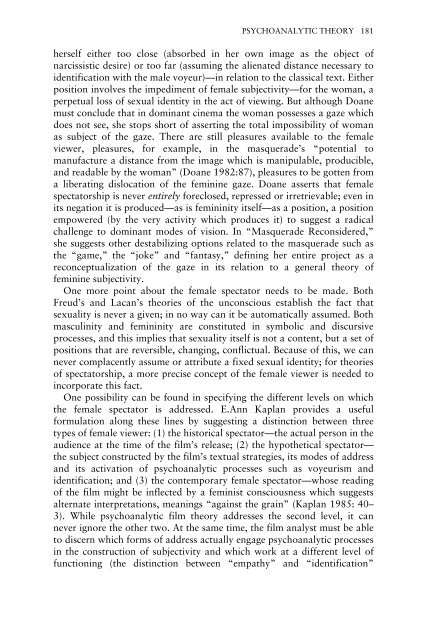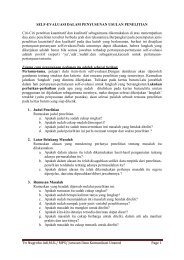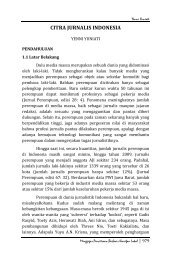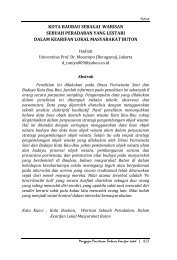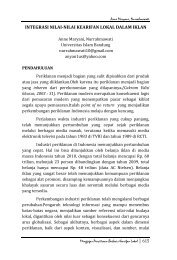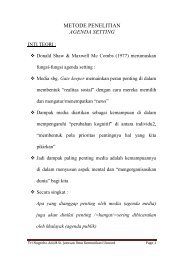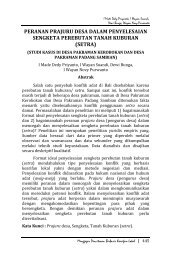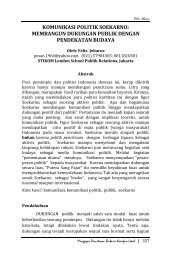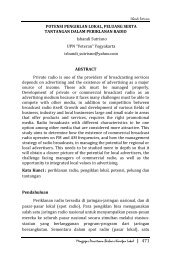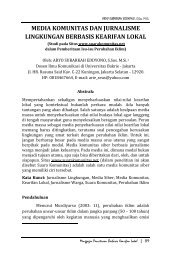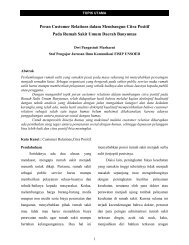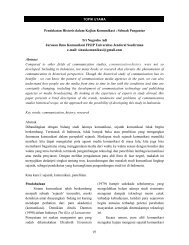New Vocabularies in Film Semiotics
New Vocabularies in Film Semiotics
New Vocabularies in Film Semiotics
Create successful ePaper yourself
Turn your PDF publications into a flip-book with our unique Google optimized e-Paper software.
PSYCHOANALYTIC THEORY 181<br />
herself either too close (absorbed <strong>in</strong> her own image as the object of<br />
narcissistic desire) or too far (assum<strong>in</strong>g the alienated distance necessary to<br />
identification with the male voyeur)—<strong>in</strong> relation to the classical text. Either<br />
position <strong>in</strong>volves the impediment of female subjectivity—for the woman, a<br />
perpetual loss of sexual identity <strong>in</strong> the act of view<strong>in</strong>g. But although Doane<br />
must conclude that <strong>in</strong> dom<strong>in</strong>ant c<strong>in</strong>ema the woman possesses a gaze which<br />
does not see, she stops short of assert<strong>in</strong>g the total impossibility of woman<br />
as subject of the gaze. There are still pleasures available to the female<br />
viewer, pleasures, for example, <strong>in</strong> the masquerade’s “potential to<br />
manufacture a distance from the image which is manipulable, producible,<br />
and readable by the woman” (Doane 1982:87), pleasures to be gotten from<br />
a liberat<strong>in</strong>g dislocation of the fem<strong>in</strong><strong>in</strong>e gaze. Doane asserts that female<br />
spectatorship is never entirely foreclosed, repressed or irretrievable; even <strong>in</strong><br />
its negation it is produced—as is fem<strong>in</strong><strong>in</strong>ity itself—as a position, a position<br />
empowered (by the very activity which produces it) to suggest a radical<br />
challenge to dom<strong>in</strong>ant modes of vision. In “Masquerade Reconsidered,”<br />
she suggests other destabiliz<strong>in</strong>g options related to the masquerade such as<br />
the “game,” the “joke” and “fantasy,” def<strong>in</strong><strong>in</strong>g her entire project as a<br />
reconceptualization of the gaze <strong>in</strong> its relation to a general theory of<br />
fem<strong>in</strong><strong>in</strong>e subjectivity.<br />
One more po<strong>in</strong>t about the female spectator needs to be made. Both<br />
Freud’s and Lacan’s theories of the unconscious establish the fact that<br />
sexuality is never a given; <strong>in</strong> no way can it be automatically assumed. Both<br />
mascul<strong>in</strong>ity and fem<strong>in</strong><strong>in</strong>ity are constituted <strong>in</strong> symbolic and discursive<br />
processes, and this implies that sexuality itself is not a content, but a set of<br />
positions that are reversible, chang<strong>in</strong>g, conflictual. Because of this, we can<br />
never complacently assume or attribute a fixed sexual identity; for theories<br />
of spectatorship, a more precise concept of the female viewer is needed to<br />
<strong>in</strong>corporate this fact.<br />
One possibility can be found <strong>in</strong> specify<strong>in</strong>g the different levels on which<br />
the female spectator is addressed. E.Ann Kaplan provides a useful<br />
formulation along these l<strong>in</strong>es by suggest<strong>in</strong>g a dist<strong>in</strong>ction between three<br />
types of female viewer: (1) the historical spectator—the actual person <strong>in</strong> the<br />
audience at the time of the film’s release; (2) the hypothetical spectator—<br />
the subject constructed by the film’s textual strategies, its modes of address<br />
and its activation of psychoanalytic processes such as voyeurism and<br />
identification; and (3) the contemporary female spectator—whose read<strong>in</strong>g<br />
of the film might be <strong>in</strong>flected by a fem<strong>in</strong>ist consciousness which suggests<br />
alternate <strong>in</strong>terpretations, mean<strong>in</strong>gs “aga<strong>in</strong>st the gra<strong>in</strong>” (Kaplan 1985: 40–<br />
3). While psychoanalytic film theory addresses the second level, it can<br />
never ignore the other two. At the same time, the film analyst must be able<br />
to discern which forms of address actually engage psychoanalytic processes<br />
<strong>in</strong> the construction of subjectivity and which work at a different level of<br />
function<strong>in</strong>g (the dist<strong>in</strong>ction between “empathy” and “identification”


